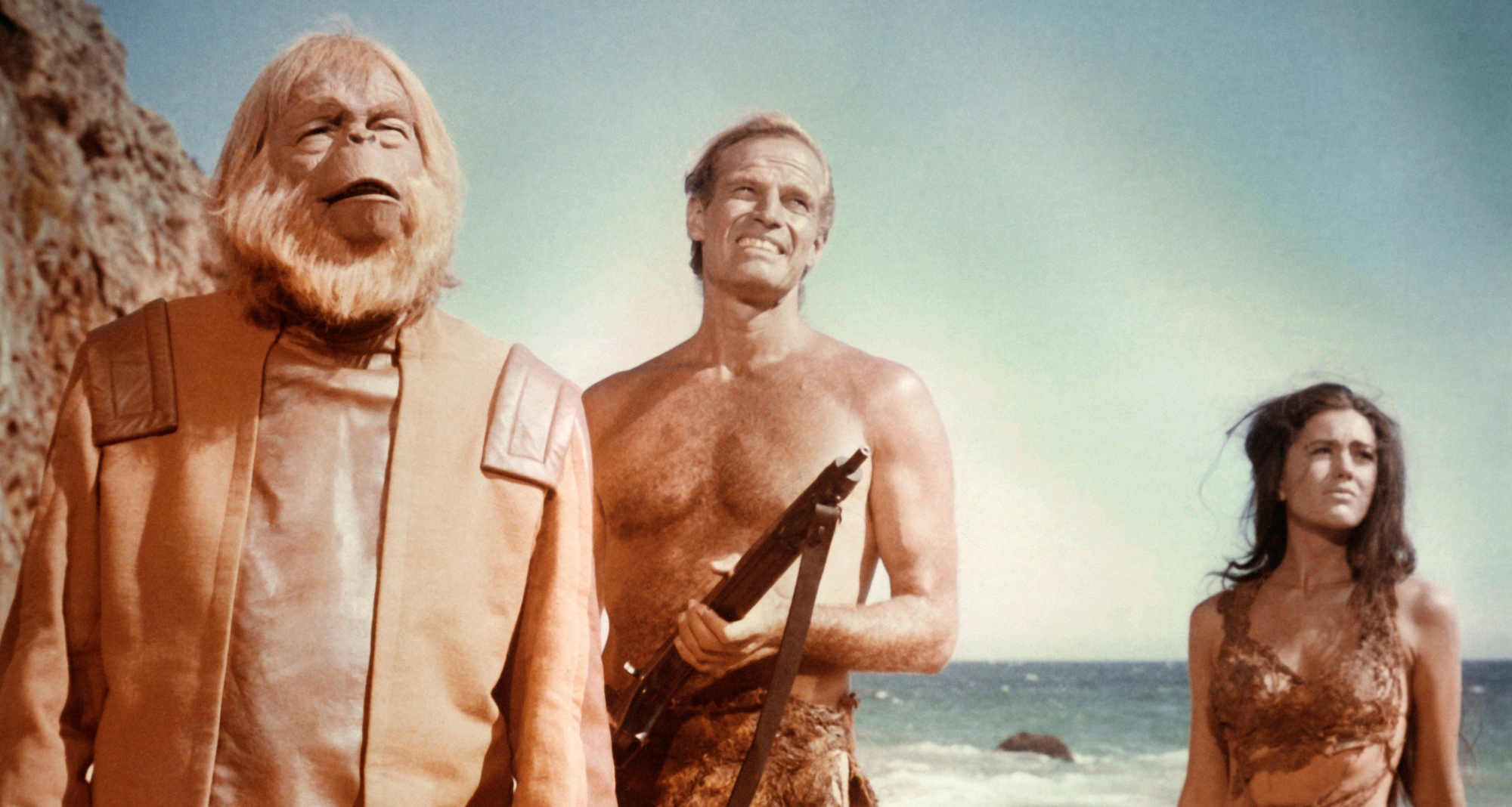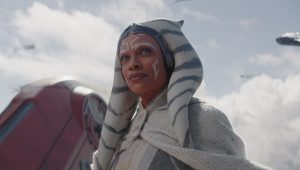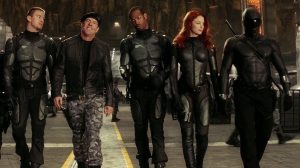
Planet of the Apes is one of the most successful and durable science fiction franchises in Hollywood history. Starting in 1968 with the original film, the Apes series has generated more than $2.1 billion in box office grosses over the course of just nine movies, with a highly-anticipated 10th entry, Kingdom of the Planet of the Apes, due for release this May. The property has also spawned both a live-action and animated TV series, books, comics, video games, and toys – the latter produced in the wake of the first film’s success and arguably the template for future movie merchandising campaigns.
And yet, as we’ve seen over and over again with blockbuster pop culture milestones like Star Wars, The Lord of the Rings, and numerous others, Hollywood at the beginning was loathe to touch the property. After publicist-turned-producer Arthur P. Jacobs secured the rights to the novel upon which the original film was based, he spent years taking it to every studio in Hollywood and even some international production entities – only to be rebuffed by execs who didn’t understand or couldn’t see its potential.
It came down to two events to finally sway powerful 20th Century Fox vice-president Richard D. Zanuck to greenlight the movie – and launch a franchise that has been a cornerstone of both sci-fi cinema and pop culture in general ever since.
No One Wanted to Monkey Around With Planet of the Apes
When Jacobs bought the rights in 1963 to French author Pierre Boulle’s satirical sci-fi novel La Planète des singes (translated as Monkey Planet in the U.K. and later retitled Planet of the Apes for its U.S. publication), he probably didn’t have any idea that he was embarking on a five-year journey to bring the book to the screen, a long process during which he faced rejection and ridicule every step of the way.
As Jacobs related to the legendary Cinefantastique magazine in a 1971 interview, he spent more than three years trying to get a studio behind the project, arming himself on each round of pitches with a new piece of the development puzzle. First, he started with production sketches; then he commissioned a screenplay by Twilight Zone creator Rod Serling (later rewritten and finalized by Michael G. Wilson); next he landed a major star, Charlton Heston, who immediately responded to Serling’s script; after original director Blake Edwards (The Pink Panther) dropped out, Heston in turn suggested director Franklin J. Schaffner, whom he had worked with on the 1965 historical epic The War Lord.
Jacobs went to MGM, United Artists, Paramount, and Warner Bros., along with Rank in England and producer Samuel Bronston in Spain. But as he told Cinefantastique, “Now I have Heston, Schaffner, a screenplay, and all the sketches. I go right back to everybody, and they throw me out again.”
A Pivotal Moment
Well, not everyone showed Jacobs the door: Richard Zanuck at 20th Century Fox was intrigued by the premise of the film, but – like many of the other studio execs who turned the project down – he couldn’t envision an audience watching the movie and doing nothing but laughing at it. As Zanuck told Jacobs, “Nobody will believe Charlton Heston talking to an ape.”
The problem of making talking, intelligent apes believable was one thing; science fiction itself still did not have the cache it does today. Despite occasional landmark films like The Day the Earth Stood Still (1951), and acclaimed but low-rated TV shows like Star Trek (1966), sci-fi was still considered kiddie stuff, mostly relegated to giant monsters or bug-eyed Martians in cheapo flying saucers.
But Zanuck remained interested – enough so that Fox actually laid out the money for the screenplay – and finally proposed an idea to Jacobs: the studio would finance a screen test – what we call these days a proof-of-concept – that would demonstrate whether human actors in ape makeup could look and speak credibly as simians, while also displaying the dramatic potential of the material.
The ape makeup – of which the ultimate version we saw onscreen was designed by John Chambers, who won a special Academy Award for his groundbreaking efforts – was one of the biggest questions surrounding the viability of the project. A Fox makeup artist named Ben Nye Sr. developed an early version of the makeup for the screen test, which ended up featuring Edward G. Robinson as Dr. Zaius and Heston as the astronaut George Taylor (named Thomas in the Serling script), with then-unknown Fox contract players James Brolin as Cornelius and Linda Harrison as Zira (Robinson eventually declined the role because he had problems with the makeup, while Harrison went on to play the mute human girl Nova in the first two movies).
Schaffner directed the test, which was enthusiastically received by Zanuck. But there was one more hurdle to overcome: showing it to an audience. “Everyone thought that no one would believe an ape talking to a man, and I said, ‘I will prove to you that they will believe it,’” Jacobs told Cinefantastique. “We packed the screening room with everyone we could get ahold of, and Zanuck said, ‘If they start laughing, forget it.’ Nobody laughed, they sat there tense, and he said, ‘Make the picture.’”
YouTube
Voyage to the Planet of the Apes
Well…apparently that’s not exactly what happened, even though that’s how Arthur Jacobs (and Charlton Heston) later told it. According to the book Planet of the Apes Revisited by Joe Russo (not that Joe Russo), Larry Landsman, and Edward Gross, associate producer Mort Abrahams had a different memory of how things went down with the screen test, which nevertheless played a key role in eventually getting the movie produced.
“We all thought it worked,” Abrahams recalled. “We edited this piece, we put it together, we ran it, and Fox said, ‘Yeah, we think it will work, but…we’re gonna pass.’” Undaunted, Jacobs continued to develop the project, hiring Michael G. Wilson to revise Serling’s screenplay while also bringing down the proposed budget (one way in which this was done was turning the urban, modern ape city of Boulle’s novel and Serling’s script into a smaller, more agrarian culture with only limited technology).
But then something happened that changed the fate of Planet of the Apes once and for all. This was now 1966, and Fox had just opened a movie called Fantastic Voyage, in which a miniaturized team of scientists pilot a microscopic vessel into a world leader’s body to save his life. According to Abrahams, he and Jacobs watched the strong box office grosses for the film – which they described, like Planet of the Apes, as a “gimmick picture” – and brought them to Zanuck’s attention.
“[Zanuck] said, ‘I’ll tell you what – you guys have a point. Let’s see if Fantastic Voyage has legs. Come back in four weeks,’” remembered Abrahams. The pair returned to see the Fox executive exactly four weeks later, by which point Fantastic Voyage was a bona fide hit. Zanuck squeezed one more concession out of them – he asked for the budget to be cut from $5.8 million to $5 million (it ended up costing $5.8 million anyway) – and took it to the Fox board of directors. “They fought him bitterly,” said Abrahams. “And he convinced them. He came back and said, ‘Okay, go.’”
The Legacy of Planet of the Apes
Released in April 1968, Planet of the Apes, of course, became a blockbuster hit and one of the biggest pictures of that year, grossing $33 million – a huge success in 1968 dollars. It arguably saved 20th Century Fox, which was reeling up to that point from monster money losers like Cleopatra (1963) and Arthur Jacobs’ own Doctor Dolittle (1967).
Not only did the movie spawn a franchise that has lasted to this day, but coming out the same year as Stanley Kubrick’s 2001: A Space Odyssey, it helped change the way the public perceived science fiction on film – as adult, intelligent fare based on provocative ideas, and not just blasters and space battles.
Speaking of blasters and space battles, it was barely five years after the success of Planet of the Apes that a young filmmaker named George Lucas took a project called The Star Wars around to Universal, United Artists, Disney, and Paramount – and got turned down at every one of them. But then he took it to 20th Century Fox, and history — much like in the Apes films themselves — began to repeat itself.
The post The Screen Test That Saved Planet of the Apes From Oblivion appeared first on Den of Geek.





